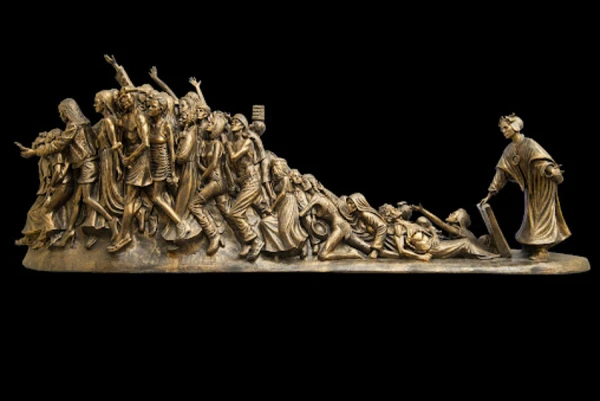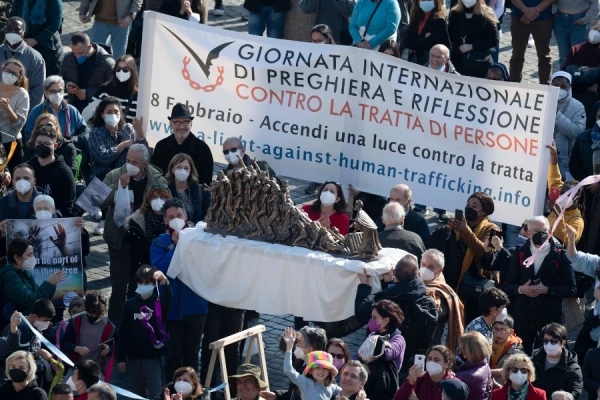“So yes, I went back to my studio and put a newborn baby [in the sculpture]. The newborn baby is right at the beginning of the release of the figures,” Schmalz said.
The sculptor said that through the process of researching and creating the piece, he became convinced that the whole world needs to face up to the reality of human trafficking.
He hopes to create 10 copies of his sculpture of St. Bakhita to install all over the world for “people to look at those faces directly and to confront the problem.”
“We have to look in their faces and this sculpture allows us to do it in an artistic way. And I do believe that that’s the first step,” he said.
Schmalz works in clay before casting the statue in bronze.

In the spring, he will complete the first full-size copies of the sculpture, one of which will be installed outside the Basilica of the National Shrine of the Immaculate Conception in Washington, D.C.
Another will be placed outside St. Joseph’s Oratory in Montreal, Canada, and a third is destined for Europe.

A smaller identical model of the sculpture will be installed in the Diocese of Rome in the coming weeks. Pope Francis blessed the sculpture on Feb. 6 during his Sunday Angelus address.
(Story continues below)
“A special greeting goes to the women religious of the group Talitha Kum, who are working against human trafficking. Thank you for what you do, for your courage. Thank you. I encourage you in your work and I bless the statue of St. Josephine Bakhita,” Pope Francis said.
Schmalz explained that he had also been inspired by Talitha Kum’s work to end human trafficking, especially the sex trafficking of girls and women.
“The sisters showed me hope, because they confront the real trafficked people every day, and if you meet with [the sisters], they still have that absolute spark of joy and light within their eyes,” he said.
Schmalz is also the creator of the refugee sculpture “Angels Unawares,” a copy of which is located in St. Peter’s Square. He said that the idea for the human trafficking sculpture also grew out of his previous artwork.
Cardinal Michael Czerny, who leads the Vatican’s migrant and refugees office, suggested to Schmalz that he use his artistic skill to create a statue on the theme of trafficking.
Schmalz said that Czerny, who is interim prefect of the integral human development dicastery, told him something which left a lasting impression.
Credit: Source link




